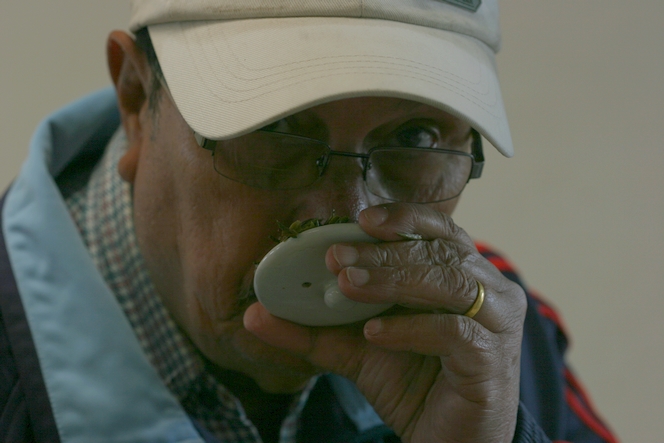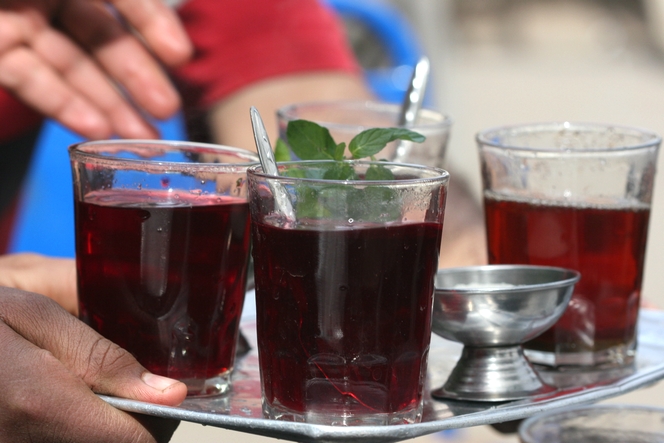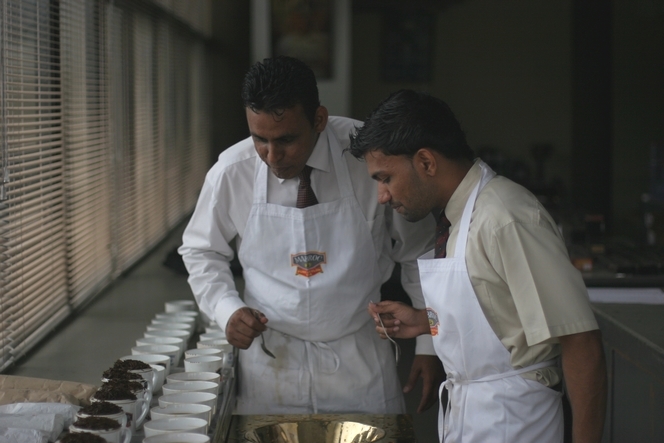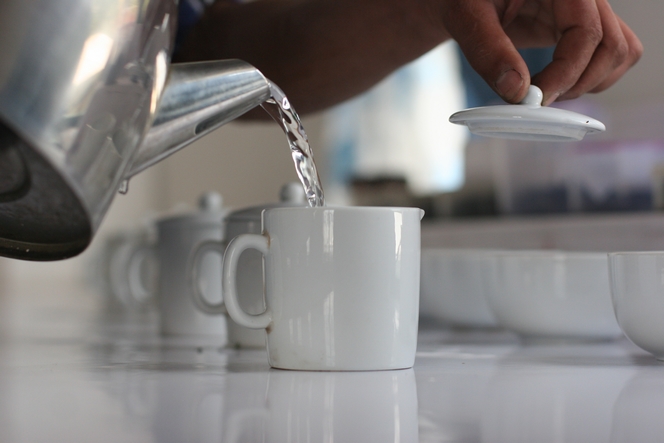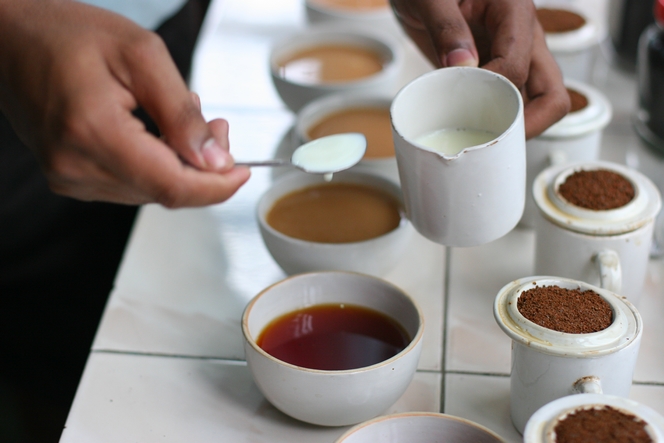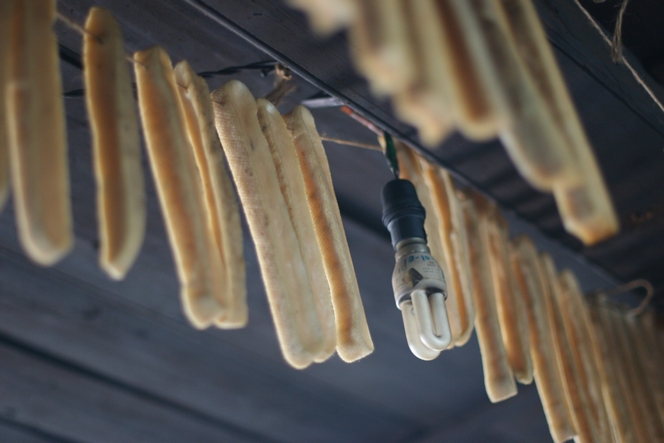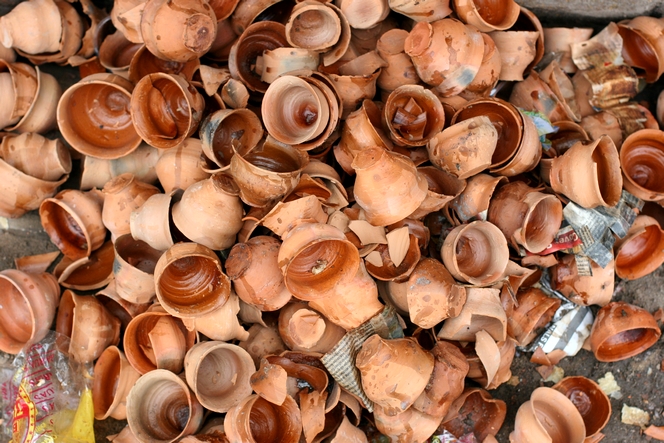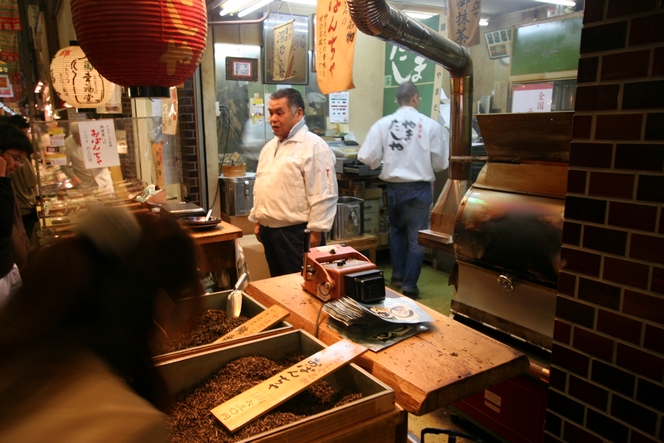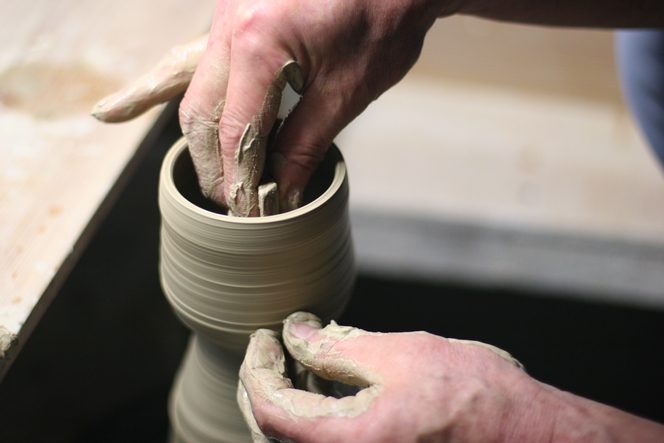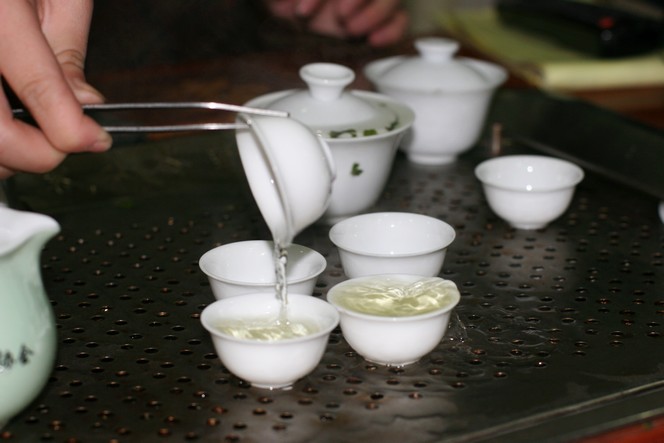When you taste tea, the first thing you do is look at the dry tea leaf, of course. Then you bring the liquor to your lips and analyse the flavours, aromas and texture. But assessing the qualities of a tea includes another important step: smelling the wet leaves that have just been infused. For this, we can follow the example of Peter Orchard, manager of Kuwapani Tea Estate, who you see here, plunging his nose into the leaves while they’re still warm. Peter is looking at me but he is elsewhere, concentrating intently on the smell of the infusion, a smell which says a great deal about the quality of the lot he has just tasted.
Tea and food
Hot tea is more refreshing than cold tea
The summer is upon us in France, and with it comes the heat. Many people like iced tea at this time of year, simply because they want a refreshing drink. But it’s funny that in regions where it is very hot – like the Sahara, but there are many other examples – people tend to drink their tea hot. In fact, hot tea is considered more refreshing than cold tea. This is because the closer the liquid’s temperature is to body temperature, the less it will provoke a temperature change. And this temperature change is one of the reasons we sweat.
Our love of iced drinks comes from the other side of the Atlantic, and when a food-related fashion arrives from that region, we are not necessary wrong to question it. My suggestion for fans of iced tea is to shun the overly sweetened – in my opinion – commercial varieties and instead to make your own delicious teas using water at room temperature, and to drink them chilled.
Or, as I am here to tell you about the different customs relating to tea, you can also celebrate the arrival of the warm season by drinking a hot tea with mint leaves, like this one, served on the banks of the river Nile.
Tea tasting with Dilan and Vidusha
Last week, in the company of Dilan Wijeyesekera and Vidusha Wakista, I tasted teas from the regions of Dimbula, Uva and Nuwara Eliya, side by side.
Dilan and Vidusha work for the company Mabroc and supply some of our teas from Sri Lanka, which come either from their own plantations or the Colombo auctions.
We also discussed “low growns”, teas from the south of the country that grow at a low altitude, and which have steadily improved in quality over the years. Most low tea plantations don’t use the rotorvane, a machine widely used on high grown plantations, which handles the leaves more roughly than the orthodox procedure.
Preparing tea requires precision
Preparing tea requires a certain amount of precision when it comes to professional tasting. If you are preparing to taste and compare a number of teas, it is essential that the infusion takes place in exactly the same conditions for them all.
So everything is done with attention: the water must be at the correct temperature, the recipients must be clean and of the same colour. The exact same quantity of leaves is placed into each pot, to the nearest tenth of a gram. Then the infusion can begin – timed, of course.
The art of tasting tea with or without milk
At the Amgoorie Tea Estate, tea is tasted both with and without milk. This is because some of the tea produced by this plantation is particularly full-bodied, and is appreciated by British consumers. So by lightening each cup with a cloud of milk, we are tasting the tea in the same way as the customer.
While adding milk is sacrilege for the finest teas, it is natural for more powerful brews. The milk reduces the astringency and sensation of bitterness.
In Nepal, cheese dries like laundry on a line
I was in Nepal recently and accepted an invitation I had received on numerous occasions to enter a house, often a farm. And I have had many opportunities to admire these strange forms hanging above my head like laundry on a line. It is difficult to know which is more incongruous, the electric bulb or these sticks.
But what is this stuff the colour of fresh butter?
In fact, it is cheese, drying out until it becomes as hard as rock. When it comes to cutting it, no less than a pair of pincers is required. Chewing it is no easier: even just a tiny piece left to soften for ten or twenty minutes in the mouth is still inedible. It requires enormous patience to actually chew it and extract its minimal flavours.
In Kolkata, you throw your teacup after use
Back to Kolkata. In this city, as in many Indian cities, people drink tea everywhere, especially in the street. There are many tea shops, where you drink the chai standing, or perched on the end of the single wooden bench on the pavement outside. In the tea shops, tea is generally served in freshly fired clay cups, which are very porous. When you have finished drinking, you throw your cup to the ground, and it breaks. As the day goes on, a little heap of broken cups gradually forms.
In Kyoto, a Japanese tea shop in a covered marked
This is what a Japanese tea shop looks like. Or rather, a tea shop in a covered market, like here at Nishiki Ichiba in Kyoto. In the foreground are chests full of Hojicha and, on the right, the apparatus with a chimney is actually a Bancha roaster. It is used to produce Hojicha. It gives off a wonderful woody, caramelised aroma which spreads to the nearby stalls.
Raku : a technique used to make tea bowls
Each tea accessory used during the Cha no Yu (the Japanese tea ceremony) is made using the methods of an ancient craft. Raku is a classic technique often used to make the “chawan”, the bowl used in the tea ceremony. This process involves firing at a very low temperature.
Here, in the Kyoto studio of Hattori Koji-San, I watched the master potter deftly work the clay and gradually shape the contours of a tea bowl.
In each country, people prepare tea differently
In Japan, they have the Cha No Yu, or “way of tea”; in Russia they prepare their brew in the samovar. The British have their tea time, the Indians drink chai. And when the Chinese prepare fine teas, such as rare Wu Longs, or Pu Ers, they follow the rules of the Gong Fu Cha.
Gong Fu describes an activity that is carried out slowly, with great self control.

